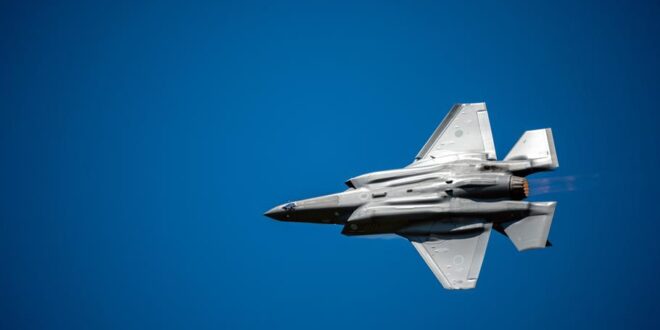The U.S. Air Force will begin deploying F-35A Lightning II fighters to northeast Japan in spring 2026, according to a Misawa city base affairs official.
The Pentagon in July announced plans to send 48 of the fifth-generation fighters to Misawa Air Base to replace 36 F-16 Fighting Falcons.
The announcement gave no date for the arrival of the F-35As, the variant built for conventional takeoffs and landings.
However, the Tohoku Defense Bureau, part of Japan’s Ministry of Defense, provided the deployment timeline to the local government last month, the city official told Stars and Stripes on Monday.
Some Japanese government officials may speak to the press only on condition of anonymity.
Misawa’s F-16s are scheduled to begin departing Misawa in summer, the official said by phone.
The base will build infrastructure to support the new aircraft, but the city government hasn’t been told about any change to the number of airmen at Misawa, the official said.
A spokesman for Misawa’s 35th Fighter Wing, Capt. LeeRoy Stark, said by phone Monday that he was awaiting clearance from U.S. Forces Japan to comment.
The wing’s two F-16 squadrons train to destroy enemy radar and missile launchers via precision bombing.
It’s a mission that would see them cross the Korean Demilitarized Zone to suppress North Korean air defenses if war broke out on the peninsula.
Misawa, which the Air Force shares with the Japan’s Air Self-Defense Force, has been home to Japanese F-35As since 2018.
The U.S. stealth jet deployment is part of a force modernization program in Japan that includes replacing 36 F-15EX Eagles on Okinawa with 48 F-15C/Ds and swapping a squadron of Navy F/A-18 Super Hornets at Marine Corps Air Station Iwakuni with F-35C Lightning IIs.
The plan, coordinated with the Japanese government, “reflects over $10 billion of capability investments to enhance the U.S.-Japan Alliance, bolster regional deterrence, and strengthen peace and stability in the Indo-Pacific region,” the Defense Department announced July 3.
In South Korea, 7th Air Force is upgrading its F-16s with improved avionics closer to fifth-generation capabilities, and retiring its A-10 Thunderbolt II ground attack aircraft and shifting its role onto Lightning IIs, F-16s and South Korean fighters, the Air Force said in November.
The Pentagon in the 2022 National Defense Strategy identified China as a global “pacing challenge” and an aggressive presence in the East and South China seas.
“The Department’s plan to station the Joint Force’s most advanced tactical aircraft in Japan demonstrates the ironclad U.S. commitment to the defense of Japan and both countries’ shared vision of a free and open Indo-Pacific region,” the statement said.
 Eurasia Press & News
Eurasia Press & News


